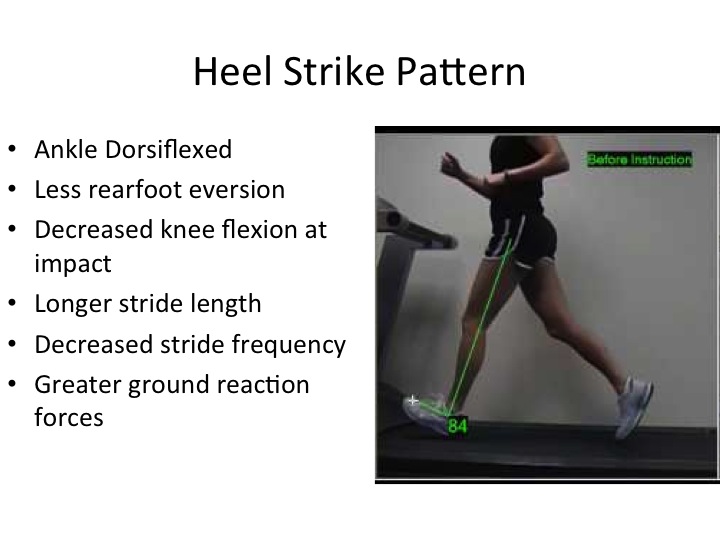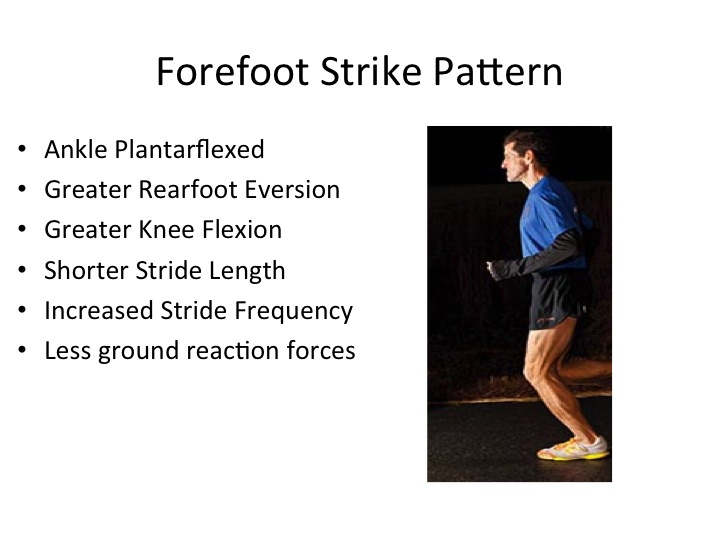Our previous blog post detailed the differences in biomechanics between foot strike patterns in runners. There are clear bio mechanical differences between utilizing a forefoot and rear foot strike pattern and these are important for gait retraining and injury risk. Obviously, the foot is the first part of the body to strike the ground in running and this impact transmits forces through the lower quarter. For example, a fore foot versus rear foot striker would have more knee flexion or extension at impact, respectively. This would require greater or lessor work from the quadriceps to control this impact. When we consider the number of strides taken in a runner’s mile, up to 2000 strides per mile depending on speed, we can gain an appreciation of the repetitive loading which may predispose a runner to different injuries based on their stride frequency and foot strike pattern.
A recent article in the American Journal of Sports Medicine examined the impact of stride frequency and strike patterns on injury predictors in running (Boyer et al. 2015). The authors examined 42 runners (50% rear foot, 50% mid foot) as they ran between 7 and 8 miles per hour at their self selected stride length then at both 5 and 10% shorter lengths. The authors noted changes in biomechanics within runners when they shortened their strides consistent with a greater stride frequency to maintain the 7-8 mph speed. Iliotibial (IT) band strain did not differ between forefoot and rear foot strikers but did increase when runners reduced their stride length (greater knee flexion). A reduction in both pelvic drop and knee adduction, which we commonly see in overuse injuries of the lower quarter in runners, was reduced when runners increased their stride frequency and decreased their stride length. The authors concluded that one foot strike pattern was not better than another, but rather the step rate and stride length has a greater impact on these biomechanics variables.
Consistent with our understanding on running injuries and biomechanics, there is not one preferred strike pattern for the foot but rather the amount of time an athlete spends in contact with the ground as well as stride variables (step length and rate) may have a greater impact on injury. To learn more about your running gait and its’ impact on performance and injury risk contact the experts at Mend.


